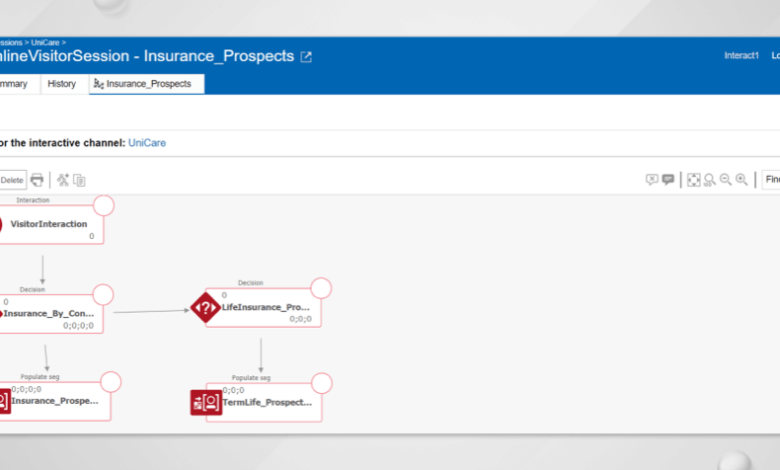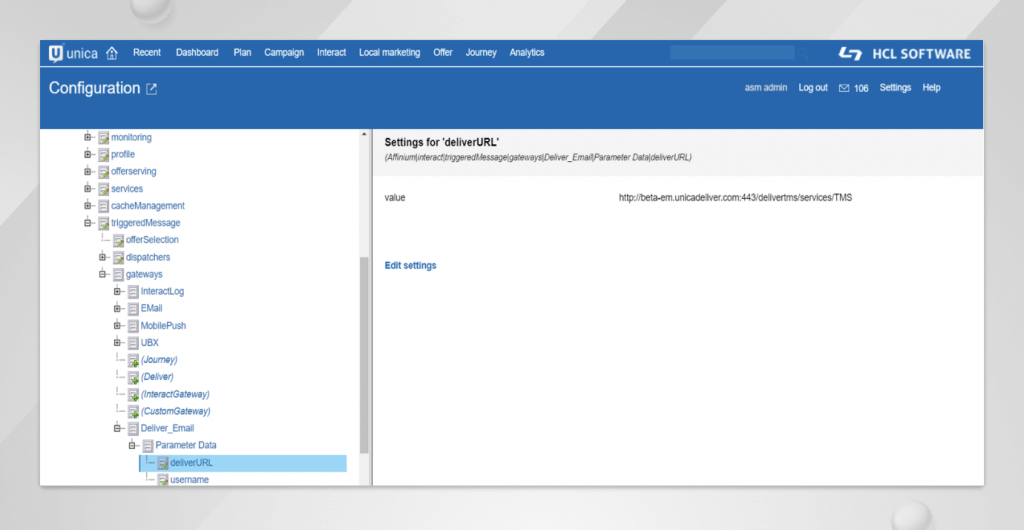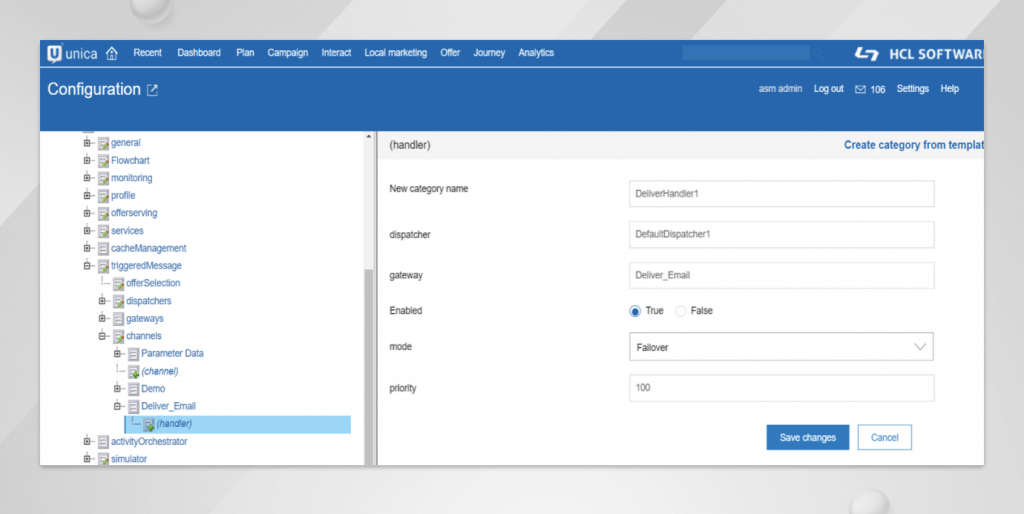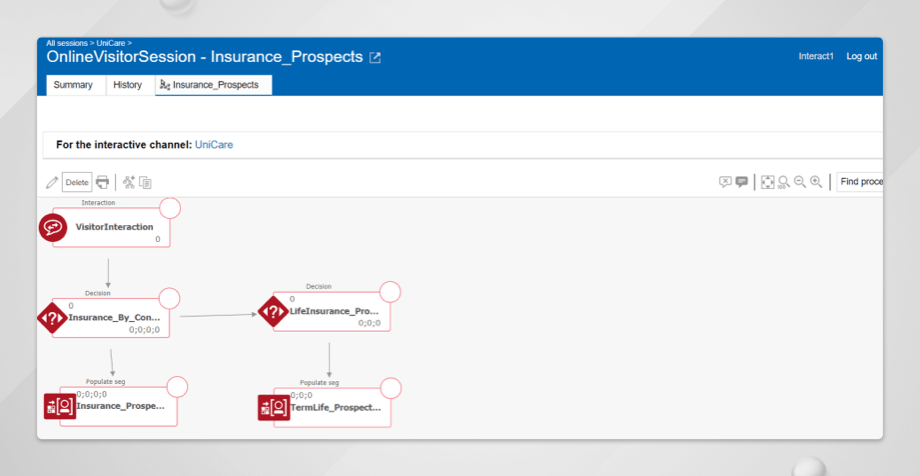
Personalization Playback in Unica Interact
Personalization playback in Unica Interact is more than just a buzzword; it’s the key to unlocking truly engaging customer experiences. Imagine crafting marketing campaigns that resonate deeply with each individual, adapting in real-time to their preferences and behaviors. That’s the power we’re exploring here – how Unica Interact’s sophisticated personalization engine lets you deliver tailored messages that convert.
This post dives into the nitty-gritty of Unica Interact’s personalization capabilities, from setting up personalized playback to measuring its effectiveness and even exploring advanced techniques like AI-powered content generation. We’ll cover everything from the core features and different personalization methods to best practices for campaign design and overcoming common implementation challenges. Get ready to transform your marketing strategy!
Unica Interact’s Personalization Capabilities

Unica Interact offers robust personalization capabilities, allowing marketers to create highly targeted and engaging customer experiences. By leveraging data about individual customer preferences and behaviors, Unica Interact dynamically tailors communications and offers, leading to improved campaign performance and stronger customer relationships. This post will delve into the core features and functionalities of Unica Interact’s personalization engine.
Core Personalization Features
Unica Interact’s personalization engine allows for real-time customization of marketing messages across various channels. Key features include dynamic content insertion, personalized offers and recommendations, and segmented messaging based on customer attributes and behavior. The system integrates seamlessly with various data sources, allowing for a holistic view of the customer and enabling highly granular personalization. This ensures that every interaction feels relevant and valuable to the recipient.
Types of Personalization
Unica Interact supports several types of personalization, catering to diverse marketing needs. These include:* Demographic Personalization: Tailoring content based on readily available customer demographics like age, gender, location, and income level. For example, a clothing retailer might show different product recommendations to a young adult versus a senior citizen.
Behavioral Personalization
Personalization playback in Unica Interact is all about creating truly tailored experiences, and thinking about how to scale that is key. This ties directly into the broader discussion of application development, especially as explored in this excellent article on domino app dev, the low-code and pro-code future , which highlights how efficient development methods can help deliver these personalized interactions.
Ultimately, the ease of building and deploying these personalized experiences directly impacts the success of personalization playback within Unica Interact.
Personalizing content based on past interactions, such as website browsing history, purchase history, and email engagement. An e-commerce site could recommend products similar to those a customer has previously viewed or purchased.
Contextual Personalization
Adapting content based on the current context, such as the time of day, device being used, or customer’s current location. A travel website might show different deals depending on the user’s location and the time of year.
Predictive Personalization
Utilizing machine learning algorithms to anticipate future customer behavior and tailor content accordingly. This could involve predicting which products a customer is likely to purchase next or which offers they are most receptive to.
Unica Interact’s Personalization Engine
The Unica Interact personalization engine works by integrating data from various sources, including CRM systems, transactional databases, and web analytics platforms. This data is processed and analyzed to create detailed customer profiles, which are then used to personalize marketing messages in real-time. The system utilizes rules-based logic and machine learning algorithms to determine the most appropriate content to display to each individual customer.
The engine ensures that personalized content is delivered seamlessly across different channels, maintaining a consistent and engaging customer experience.
Effective Personalization Strategies
Effective personalization strategies in Unica Interact often involve a combination of different personalization methods. For example, a financial institution might use demographic data to segment customers into different risk profiles, then use behavioral data to personalize investment recommendations within each segment. Another example would be an online retailer using contextual personalization to display relevant products based on the customer’s location and browsing history, further enhanced by predictive personalization to anticipate their future needs.
Comparison of Personalization Methods
| Personalization Method | Data Source | Implementation Complexity | Effectiveness |
|---|---|---|---|
| Demographic | CRM, External Databases | Low | Moderate |
| Behavioral | Website Analytics, Transactional Data | Medium | High |
| Contextual | Website Analytics, Device Data | Medium | High |
| Predictive | Various Data Sources, Machine Learning Models | High | Very High |
Implementing Personalization Playback in Unica Interact
Setting up personalized playback in Unica Interact allows you to deliver highly targeted and relevant messaging to your audience, significantly improving engagement and campaign effectiveness. This involves leveraging Unica Interact’s powerful capabilities to tailor content based on individual customer data and preferences. Let’s dive into the key steps and best practices.
Setting up Personalized Playback
Implementing personalized playback requires a structured approach. First, ensure your customer data is properly integrated and accessible within Unica Interact. This involves defining the relevant data fields that will be used for personalization (e.g., name, purchase history, demographics). Next, create your personalized content using Unica Interact’s templates and personalization tokens. These tokens act as placeholders, dynamically replaced with the individual customer’s data during playback.
Finally, configure your campaign to route the personalized content to the appropriate segments based on your defined criteria. Thorough testing is crucial before launching the campaign to identify and fix any errors.
Best Practices for Designing Effective Personalized Campaigns, Personalization playback in unica interact
Effective personalized campaigns require careful consideration of several factors. A key element is understanding your audience. Segmentation based on detailed customer profiles enables more precise targeting. Furthermore, maintaining a consistent brand voice and visual identity across all personalized content is crucial for brand recognition and trust. The design should be responsive, adapting seamlessly to different devices.
Finally, A/B testing different versions of personalized content can help optimize performance and improve campaign effectiveness. For example, A/B testing subject lines or calls to action can dramatically improve open and click-through rates.
Importance of Data Quality for Successful Personalization
The success of personalization hinges on the quality of your data. Inaccurate or incomplete data leads to irrelevant messaging and can damage your brand reputation. Data cleansing and validation are critical steps. This includes removing duplicates, correcting inconsistencies, and ensuring data accuracy. Regular data audits are recommended to maintain data quality over time.
For instance, a campaign targeting customers based on their preferred product category would fail if the data incorrectly identifies their preferences.
Challenges of Implementing Personalization Playback and Solutions
Implementing personalized playback can present challenges. One common hurdle is the complexity of managing large volumes of data and ensuring real-time personalization. Employing efficient data management techniques and leveraging Unica Interact’s features to optimize data processing can mitigate this. Another challenge is maintaining data privacy and complying with relevant regulations like GDPR. Implementing robust data security measures and obtaining explicit consent from customers are essential.
Finally, the need for iterative testing and optimization is paramount. Continuous monitoring and analysis of campaign performance are crucial for making necessary adjustments and improvements.
Segmenting Audiences for Personalized Playback
Effective audience segmentation is the cornerstone of successful personalization. Unica Interact offers powerful segmentation tools based on various criteria. You can segment audiences based on demographics, purchase history, website behavior, and more. For example, you could create segments for high-value customers, new customers, or customers who have shown interest in specific products. This granular segmentation allows for highly targeted messaging, enhancing campaign relevance and effectiveness.
Defining clear segmentation rules and regularly reviewing and updating these rules are essential to maintain the accuracy and relevance of your segments.
Measuring the Effectiveness of Personalization: Personalization Playback In Unica Interact
So, you’ve implemented personalized playback in Unica Interact. Fantastic! But how do you know if it’s actually working? Measuring the effectiveness of your personalization efforts is crucial for optimizing campaigns and maximizing ROI. This isn’t just about checking boxes; it’s about understanding what resonates with your audience and refining your strategies for better results. Let’s delve into the key metrics and strategies for assessing your success.
Key Metrics for Evaluating Personalization Success
Tracking the right metrics is paramount to understanding the impact of your personalized campaigns. These metrics provide a clear picture of whether your efforts are driving engagement and conversions. Without this data-driven approach, improvements remain speculative at best.
- Open Rates: A higher open rate for personalized emails compared to generic emails indicates a successful personalization strategy. For example, a 20% increase in open rates after implementing personalized subject lines signifies a positive impact.
- Click-Through Rates (CTR): Personalized content should encourage more clicks. A significant increase in CTR suggests that your personalized messaging is resonating with the target audience. A jump from 5% to 10% is a good indication of success.
- Conversion Rates: Ultimately, personalization aims to drive conversions (purchases, sign-ups, etc.). Track the conversion rate for personalized campaigns and compare it to the baseline conversion rate of generic campaigns. A 15% increase in conversion rates following personalization shows significant improvement.
- Bounce Rates: Monitor bounce rates to identify any issues with personalized content. A high bounce rate might indicate problems with content relevance or technical glitches in the personalization process. For instance, a bounce rate significantly higher than your average suggests a problem that needs immediate attention.
- Customer Lifetime Value (CLTV): Personalized interactions can foster stronger customer relationships, leading to increased CLTV. Analyze the CLTV of customers exposed to personalized campaigns compared to those who received generic messaging. A demonstrable increase in CLTV proves the long-term value of personalization.
Designing a Reporting Dashboard for Personalized Campaigns
A well-designed dashboard provides a centralized view of your key performance indicators (KPIs). This allows for quick identification of trends and areas needing improvement. It should be intuitive and easy to understand for both technical and non-technical stakeholders.The dashboard should display the metrics discussed above, ideally visualized through charts and graphs. It should also allow for segmentation by different audience groups, campaigns, and channels.
For example, a line graph showing CTR over time for different personalized email campaigns will help identify which campaigns performed best. A bar chart comparing conversion rates for personalized versus generic campaigns will clearly illustrate the impact of personalization.
Interpreting Personalization Performance Analysis Results
Analyzing the data from your reporting dashboard involves comparing the performance of personalized campaigns against generic campaigns and identifying trends. Statistical significance testing can help determine if observed differences are truly due to personalization or simply random variation.For instance, if your personalized campaigns show a statistically significant increase in conversion rates compared to generic campaigns, you can confidently attribute the improvement to your personalization efforts.
Conversely, if there’s no significant difference, it might indicate a need to refine your personalization strategy. A/B testing different personalization approaches can help pinpoint the most effective techniques.
Comparing Personalized vs. Generic Campaigns
Direct comparison is essential. You need to juxtapose the performance of personalized campaigns against those using generic messaging. This side-by-side comparison clearly highlights the impact of personalization.Consider creating a table that shows key metrics (open rates, CTR, conversion rates) for both personalized and generic campaigns. This provides a clear, concise summary of the impact of your personalization strategy.
For example, if personalized emails have a 25% higher conversion rate than generic emails, the effectiveness is evident.
Recommendations for Improving Personalization Strategies
Based on your performance data, you can refine your strategies. This iterative process is crucial for continuous improvement.
- Refine Targeting: If certain segments show lower engagement, review your targeting criteria. Are you reaching the right audience with the right message?
- Improve Content: Analyze content performance to identify areas for improvement. Is the messaging compelling? Is the content relevant to the individual’s needs and interests?
- Optimize Channels: Determine which channels are most effective for delivering personalized messages. Are some channels performing better than others? Why?
- A/B Test: Continuously test different personalization strategies to identify what works best for your audience. Experiment with various messaging approaches, content formats, and call-to-actions.
- Enhance Data Collection: Ensure you’re collecting sufficient data to inform your personalization efforts. The more data you have, the better you can tailor your messages to individual preferences.
Advanced Personalization Techniques in Unica Interact

Unica Interact, with its robust personalization engine, offers more than just basic segmentation. This post delves into the advanced techniques available, leveraging AI and machine learning to create truly dynamic and engaging customer experiences. We’ll explore how to build dynamic content, personalize across multiple channels, and implement innovative strategies for maximizing impact.
Moving beyond simple rule-based personalization, Unica Interact allows marketers to tap into the power of predictive analytics and AI to deliver highly relevant and timely messages. This level of sophistication significantly improves customer engagement and conversion rates. The key is to understand how these tools can be utilized effectively within the Unica Interact platform.
AI and Machine Learning for Enhanced Personalization
Unica Interact’s integration with AI and machine learning algorithms allows for sophisticated predictive modeling. This enables marketers to anticipate customer needs and preferences, leading to more proactive and relevant personalization. For example, machine learning models can analyze past customer behavior – purchase history, website interactions, email engagement – to predict future actions. This predictive power can be used to personalize product recommendations, offer targeted discounts, or even customize the timing and frequency of marketing communications.
The result is a more personalized experience that feels less intrusive and more valuable to the customer. This predictive capability extends beyond simple recommendations; it can also inform the creation of dynamic content tailored to individual customer segments based on predicted future behavior.
Creating Dynamic Content Using Unica Interact’s Personalization Features
Unica Interact offers several features to create dynamic content. These features allow marketers to insert personalized elements into emails, website content, and other marketing materials. For example, using personalization tokens, marketers can dynamically insert a customer’s name, purchase history, or preferred product category into a marketing email. Beyond simple token insertion, Unica Interact’s advanced features enable the creation of conditional content.
This means that different content blocks can be displayed based on specific customer attributes or behavior. Imagine a welcome email where the content changes depending on whether the customer is a new subscriber or a returning customer. This level of personalization enhances the relevance and impact of every message. Furthermore, A/B testing capabilities within Unica Interact allow for the optimization of dynamic content, ensuring that the most effective variations are used.
Personalizing the User Experience Across Different Channels
Consistent personalization across multiple channels is crucial for a seamless customer experience. Unica Interact facilitates this by allowing marketers to leverage the same customer data and personalization rules across various channels, including email, website, mobile apps, and even SMS. For instance, a customer who has shown interest in a specific product category on the website might receive a targeted email promoting related products, followed by a personalized mobile app notification highlighting a relevant sale.
This integrated approach ensures that the customer receives a consistent and relevant message regardless of the channel they are using. The key is to maintain data consistency and utilize Unica Interact’s multi-channel capabilities to deliver a unified experience.
Examples of Innovative Personalization Strategies Implemented in Unica Interact
One innovative strategy is using personalized product recommendations based on collaborative filtering. This technique analyzes the purchasing behavior of similar customers to recommend products that the target customer might also find appealing. Another example is using real-time personalization to dynamically update website content based on a customer’s current browsing behavior. For example, if a customer is viewing a specific product, related products or accessories can be prominently displayed.
Finally, implementing personalized journey mapping allows for the creation of customized customer journeys based on individual customer segments and their interactions with the brand. This ensures that each customer receives a tailored experience that guides them towards the desired outcome.
Scenarios for Advanced Personalization Techniques
Advanced personalization techniques in Unica Interact can be applied across a wide range of scenarios to enhance customer engagement and drive business results.
- Personalized Product Recommendations: Suggesting products based on browsing history, purchase history, or similar customer profiles.
- Targeted Promotions and Discounts: Offering customized deals based on customer segmentation and predicted behavior.
- Dynamic Website Content: Adapting website content based on user preferences and real-time behavior.
- Personalized Email Marketing: Tailoring email content, subject lines, and frequency to individual customer preferences.
- Multi-Channel Campaign Personalization: Coordinating personalized messages across email, website, mobile app, and SMS.
- Customer Journey Optimization: Personalizing the customer journey based on individual customer interactions and behavior.
Security and Privacy Considerations
Personalization, while offering incredible benefits for customer engagement, hinges on the ethical and responsible handling of user data. Ignoring security and privacy implications can lead to significant legal repercussions, reputational damage, and loss of customer trust. This section explores the critical aspects of data security and privacy in the context of Unica Interact’s personalization capabilities.Data privacy regulations, such as GDPR, CCPA, and others, mandate specific requirements for collecting, processing, and storing personal data.
Failure to comply can result in substantial fines and legal action. Understanding these regulations and implementing appropriate measures is paramount for any organization using personalization technology.
Data Security Measures in Unica Interact
Unica Interact employs a multi-layered approach to data security. This includes robust encryption methods for data at rest and in transit, secure access controls limiting data access to authorized personnel only, and regular security audits and penetration testing to identify and address vulnerabilities. The platform also incorporates features such as data masking and anonymization to protect sensitive information.
Furthermore, Unica Interact adheres to industry best practices and relevant security standards, ensuring a high level of data protection.
Compliance with Data Privacy Regulations
To ensure compliance with data privacy regulations, organizations using Unica Interact should implement several key strategies. This includes obtaining explicit consent from users for data collection and processing, providing clear and transparent privacy policies outlining data usage practices, and offering users control over their data, including the ability to access, correct, or delete their information. Regular data protection impact assessments (DPIAs) should be conducted to identify and mitigate potential risks.
Finally, maintaining accurate and up-to-date records of data processing activities is crucial for demonstrating compliance.
Best Practices for Ethical Use of Personalization Data
Ethical considerations are crucial in personalization. Transparency is key; users should be aware of how their data is being used to personalize their experience. Data minimization—collecting only the necessary data—should be prioritized. Furthermore, organizations should avoid using personalization in ways that could be discriminatory or manipulative. Regularly reviewing and updating personalization strategies to ensure they align with ethical guidelines and evolving user expectations is a continuous process.
Checklist for Assessing Security and Privacy Implications
Before launching any personalized campaign, a thorough assessment of security and privacy implications is essential. This checklist can help:
- Data Inventory: Identify all personal data collected and processed.
- Legal Compliance: Verify compliance with all relevant data privacy regulations.
- Consent Mechanisms: Ensure explicit consent is obtained for all data processing activities.
- Security Controls: Review and implement appropriate security measures (encryption, access controls, etc.).
- Data Minimization: Assess whether the data collected is truly necessary for personalization.
- Privacy Policy: Ensure the privacy policy accurately reflects data usage practices.
- Data Retention: Establish clear data retention policies and procedures.
- Incident Response Plan: Develop a plan to address data breaches or security incidents.
- Regular Audits: Conduct regular audits to ensure ongoing compliance.
Final Thoughts

Mastering personalization playback in Unica Interact isn’t just about sending targeted emails; it’s about building meaningful relationships with your customers. By leveraging Unica Interact’s powerful tools and following the best practices Artikeld here, you can create truly engaging experiences that drive conversions and foster brand loyalty. Remember, data quality is paramount, and continuous monitoring and optimization are crucial for maximizing the return on your personalization efforts.
So, dive in, experiment, and watch your campaigns soar!
Query Resolution
What data types can Unica Interact use for personalization?
Unica Interact can leverage a wide range of data, including demographics, purchase history, website behavior, email interactions, and even social media activity to personalize the customer experience.
How does Unica Interact handle data privacy and security?
Unica Interact employs robust security measures to protect user data and adheres to relevant data privacy regulations. Specific details on their security protocols should be reviewed in their official documentation.
Can I A/B test different personalization strategies within Unica Interact?
Yes, Unica Interact allows for A/B testing of various personalization strategies to determine which approaches yield the best results. This enables data-driven optimization of your campaigns.
What if I don’t have a lot of customer data?
Even with limited data, you can still implement basic personalization strategies in Unica Interact. Start with broad segmentation based on readily available information and gradually refine your approach as you gather more data.




